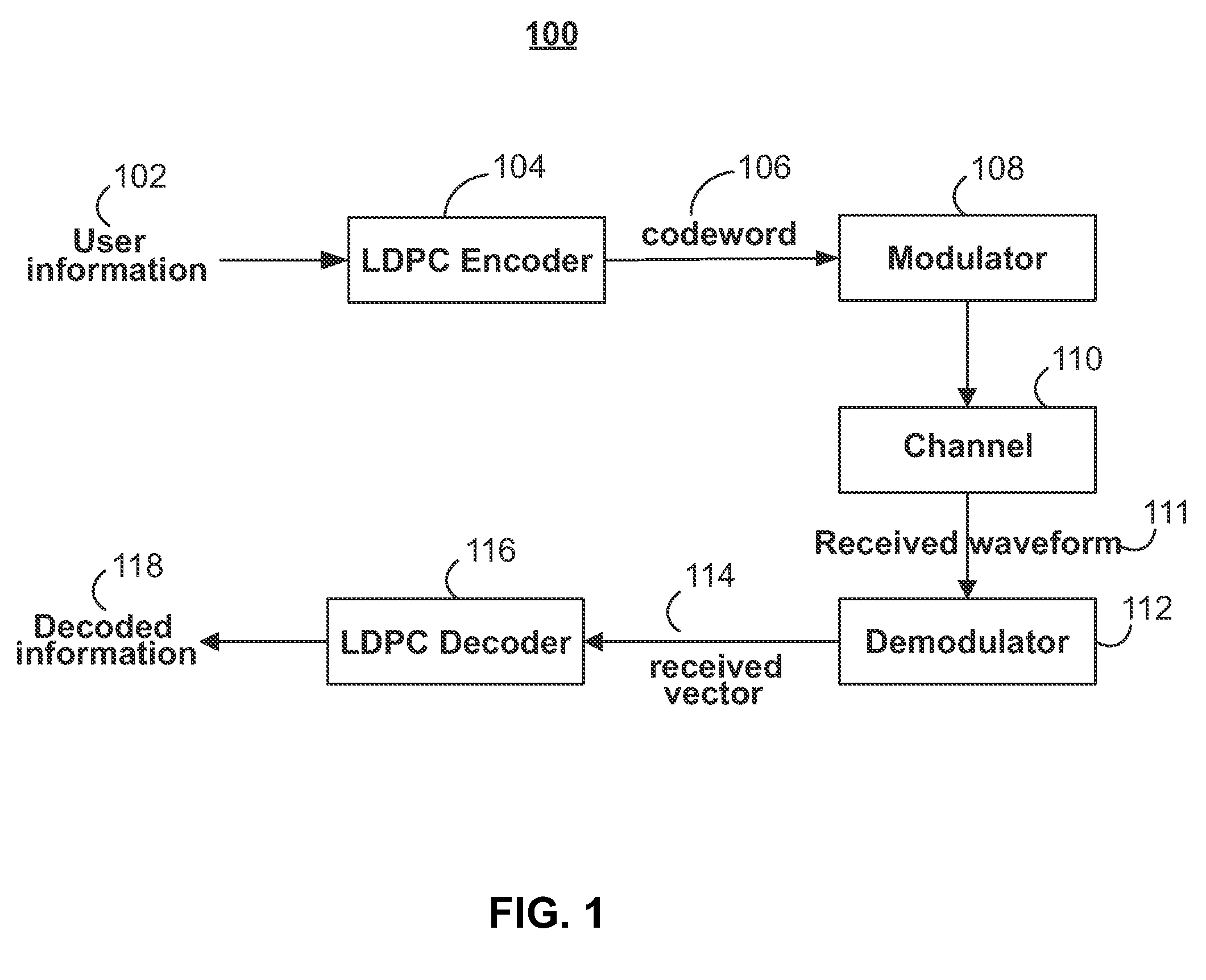Power consumption in LDPC decoder for low-power applications
a low-power, data decoding technology, applied in the direction of coding, code conversion, instruments, etc., can solve the problems of reducing the accuracy of the decoder, reducing the accuracy of the message, and disadvantageous power consumption of the low-power decoder, so as to reduce the accuracy of the decoder, reduce the scaling factor used, and reduce the effect of the decoding precision
- Summary
- Abstract
- Description
- Claims
- Application Information
AI Technical Summary
Benefits of technology
Problems solved by technology
Method used
Image
Examples
Embodiment Construction
[0023]Systems and methods are provided for reducing the power consumed by LDPC decoders while substantially maintaining the performance of the decoders. In applications and devices where information may be altered by interference signals or other phenomena, error-correction codes, such as LDPC codes, may provide a measured way to protect information against such interference. As used herein, “information” and “data” refer to any unit or aggregate of energy or signals that contain some meaning or usefulness. Encoding may generally refer to the process of generating data in a manner that facilitates subsequent detection and / or correction of errors in the data, while decoding may generally refer to the counterpart process of detecting and / or correcting the errors. The elements of a coding system that perform encoding and decoding are likewise referred to as encoders and decoders, respectively.
[0024]FIG. 1 shows an illustrative communication or data storage system 100 that utilizes erro...
PUM
 Login to View More
Login to View More Abstract
Description
Claims
Application Information
 Login to View More
Login to View More - R&D
- Intellectual Property
- Life Sciences
- Materials
- Tech Scout
- Unparalleled Data Quality
- Higher Quality Content
- 60% Fewer Hallucinations
Browse by: Latest US Patents, China's latest patents, Technical Efficacy Thesaurus, Application Domain, Technology Topic, Popular Technical Reports.
© 2025 PatSnap. All rights reserved.Legal|Privacy policy|Modern Slavery Act Transparency Statement|Sitemap|About US| Contact US: help@patsnap.com



